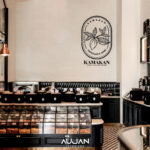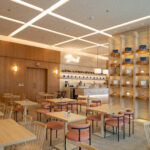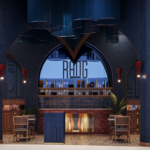Introduction:
Embrace a greener tomorrow with innovative Green Practices in Interior Fitout. This article delves into sustainable strategies, offering a comprehensive guide for a conscious and eco-friendly interior transformation.
Sustainable Material Selection
Selecting eco-friendly materials is the cornerstone of a green fitout. Opt for recycled, reclaimed, or rapidly renewable resources, reducing environmental impact and fostering a healthier indoor environment.
Energy-Efficient Lighting Solutions
Illuminate spaces responsibly by integrating LED lighting. Energy-efficient LEDs not only save power but also contribute to creating a vibrant and eco-conscious atmosphere within the interiors.
Indoor Air Quality Enhancement
Prioritize indoor air quality by incorporating greenery and utilizing low VOC (Volatile Organic Compounds) paints and finishes. A breath of fresh air is not only invigorating but also essential for occupant well-being.
Waste Reduction and Recycling
Implement effective waste management systems, encouraging recycling and minimizing landfill contributions. Transform waste into resources, promoting a circular economy within interior fitout projects.
Water Conservation Measures
Integrate water-efficient fixtures and systems to minimize water consumption. Smart plumbing choices contribute to sustainability, making every drop count in your interior fitout.
Eco-Friendly Furniture Choices
Opt for furniture made from sustainable materials like bamboo, reclaimed wood, or recycled metal. Green furniture choices enhance aesthetics while aligning with environmentally conscious practices.
Energy-Efficient HVAC Systems
Choose Heating, Ventilation, and Air Conditioning (HVAC) systems that prioritize energy efficiency. This not only reduces operational costs but also minimizes the carbon footprint associated with interior climate control.
Smart Technology Integration
Incorporate smart technologies for energy monitoring and control. Automation fosters efficiency, allowing occupants to manage and optimize energy consumption intelligently.
Biophilic Design Elements
Bring nature indoors through biophilic design, connecting occupants with the environment. Natural light, green walls, and nature-inspired aesthetics enhance well-being while promoting sustainability.
Sustainable Interior Finishes
Explore eco-friendly finishes such as recycled glass tiles, reclaimed wood paneling, and cork flooring. Sustainable finishes contribute to a distinctive and environmentally conscious interior aesthetic.
Lifecycle Analysis Considerations
Conduct a lifecycle analysis for materials and products, considering their environmental impact from production to disposal. This holistic approach ensures sustainable choices throughout the fitout process.
Accessibility and Universal Design
Embrace universal design principles, ensuring that spaces are accessible to everyone, regardless of ability. Inclusive design not only supports diversity but also promotes sustainable and timeless interiors.
Community and Social Responsibility
Engage with local communities and prioritize social responsibility. Support local artisans and businesses, fostering a sense of community and contributing to the social sustainability of your interior fitout project.
Green Certification Standards
Seek certifications such as LEED (Leadership in Energy and Environmental Design) to validate your commitment to green practices. Green certifications provide recognition and assurance of sustainable excellence.
Maintenance and Longevity Strategies
Plan for the long term by adopting maintenance strategies that extend the lifespan of interior elements. Sustainable practices include regular maintenance, reducing the need for frequent replacements.
Frequently Asked Questions (FAQs)
Q: Are green materials more expensive?
A: While some eco-friendly materials may have a higher initial cost, their long-term benefits, including energy efficiency and durability, often outweigh the upfront expenses.
Q: How can biophilic design impact well-being?
A: Biophilic design, integrating nature into interiors, has been proven to reduce stress, enhance creativity, and improve overall well-being by fostering a connection with the natural environment.
Q: What is VOC, and why is it important in interior fitouts?
A: VOC, or Volatile Organic Compounds, are chemicals emitted by certain materials. Opting for low VOC paints and finishes is crucial as it improves indoor air quality and reduces health risks.
Q: Is LEED certification necessary for every project?
A: While not mandatory, LEED certification adds credibility to your commitment to sustainable practices. It showcases adherence to stringent environmental standards, making your project stand out.
Q: How can I promote community engagement in my fitout project?
A: Engage with local artisans, source materials locally, and contribute to community initiatives. This not only supports local businesses but also fosters a sense of community in your interior fitout endeavors.
Q: Can sustainable practices be applied to existing interiors?
A: Absolutely. Retrofitting existing spaces with sustainable practices, such as energy-efficient lighting and eco-friendly finishes, is a commendable step toward transforming any interior into an environmentally conscious one.
Conclusion:
Embarking on a journey toward Green Practices in Interior Fitout not only contributes to a sustainable future but also creates spaces that prioritize well-being and environmental consciousness. By incorporating these strategies, your interior fitout project becomes a beacon of eco-friendly innovation and responsible design.






